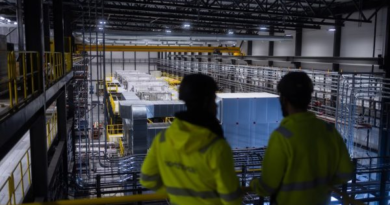Six imperatives for building AI-first companies
Change happens slowly, and then all at once — especially in complex industries like healthcare.
Just five years ago, venture capital investments in healthcare AI were emerging and exploratory. Half a decade and one global pandemic later, we’re living in a brave and more ambitious new world defined by an unbridled enthusiasm for leveraging revolutionary technologies like AI.
Pointing this technology at previously intractable problems in key industries such as healthcare, life sciences, and beyond is among the greatest opportunities of the century.
The year 2022 was when the broader public bore witness to material advancements in AI research that have matured from lab to life. ChatGPT educated over 100 million people globally about transformers in just two months.
What was once a nascent area of research has now become venture capital’s next platform shift, and with that, investors ask, “How will generational AI companies be built in healthcare, life sciences, and beyond?”
AI-first companies are in the business of advancing AI as a science, whereas AI-enabled companies are implementation and distribution machines. The two company phenotypes establish moats at different layers — AI-first companies innovate just above silicon, while AI-enabled companies create enterprise value at the application level.
For founders, knowing what kind of company you are building is essential for recruiting proper talent, partnering with aligned investors, securing sufficient capital, and deploying a viable business model. AI-first companies require deep AI research acumen, investors willing to take a long view, materially more capital, and potentially less conventional business models than AI-enabled peers.
The impact of AI-first companies will be greater, financial returns superior, and moats more enduring than their AI-enabled counterparts.
In reality, this distinction is a spectrum, not a binary. Impactful companies will be built with both approaches. For AI-first companies, though, we believe the fruits will be worth the labors.
Influence over the technology stack from the ground up enables tight control over cost structure, immeasurable product optionality, and greater defensibility relative to AI-enabled companies that defer the exercise of scientific inquiry to those that are AI first.
We can no longer afford to conflate AI-first and AI-enabled companies. So far, the largest AI-first companies have been built for horizontal applications (e.g., OpenAI, Cohere, Anthropic); yet vertical, industry-specific platforms, such as those in healthcare and life sciences, will showcase the expansive capabilities of large-scale models to deliver real-world impact.
For founders, we believe enduring AI-first companies — in healthcare, life sciences, and beyond — will follow these six imperatives.
Create and sustain an undeniable data advantage
AI-first companies exhibit an insatiable appetite for data and employ creative means for acquiring it sustainably. In addition to amassing large and robust datasets, AI-first companies develop designer datasets that are uniquely suited to deliver high performance on specific tasks.
Designer datasets are unique in that they are not easily found in public; they are machine readable, in that they are ingestible by AI models; and they are scalable, in that it is tractable to generate high volumes over time.
Importantly, designer datasets are not simply the exhaust of processes within a given system, and they are not generated by customers alone. For example, the healthcare and life sciences industries generate 30% of the world’s data, and yet companies that train only on existing electronic health record data or resources like PubMed leave material performance gains and capabilities behind.
Designer datasets may require authoring experimental protocols for situations that do not occur naturally but that deliver strong model performance for a given task.
For example, Subtle Medical, an AI-first company focused on imaging acceleration, generated millions of imperfect MRI images captured in 15 minutes, which were later utilized to train deep learning models that could reconstruct and de-noise medical imaging exams taken in shorter periods of time. In practice, imperfect MRI images provide little clinical value; however, as an AI-first company, these images trained deep neural networks that created a data moat for Subtle’s technology.
Reinforcement learning with (expert) human feedback — RL(E)HF — is another critical tool for AI-first companies. RLHF is a technique where an AI system learns and improves its performance by receiving feedback from human input. With RL(E)HF, expert human feedback provided by individuals trained in particular disciplines such as neurology or structural biology can tune model outputs for high performance in that domain.
Abridge, an AI-first company that provides ambient documentation tools for clinicians, leverages clinician feedback on AI-authored notes to enhance note accuracy and quality across specialties.
Data derived from customers also creates flywheels of opportunities for generating novel and defensible data assets. After establishing product-market fit, AI-first companies can leverage this position to serve adjacent customer segments. By capturing and integrating datasets across stakeholders in a given industry, AI-first companies can strengthen data advantages, unlock TAM, and create new categories.




